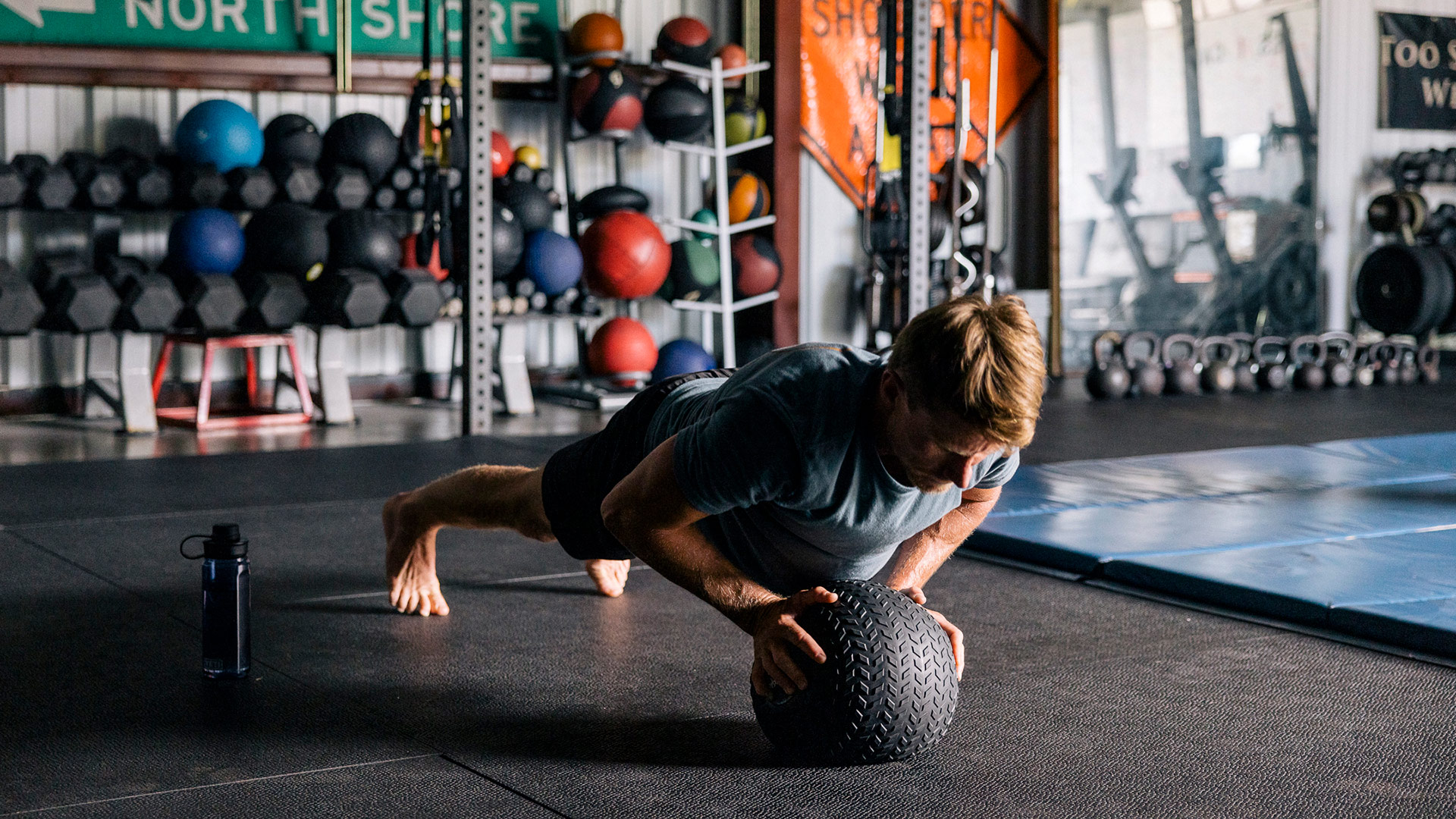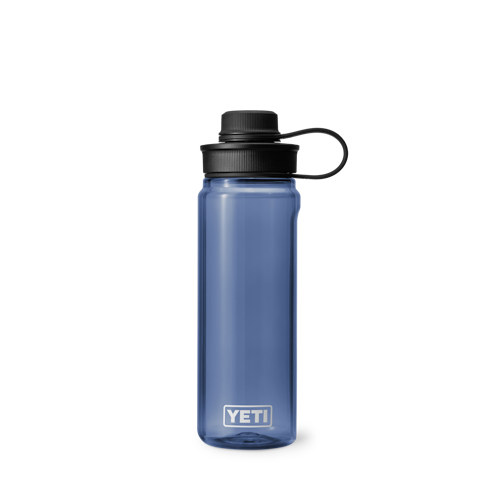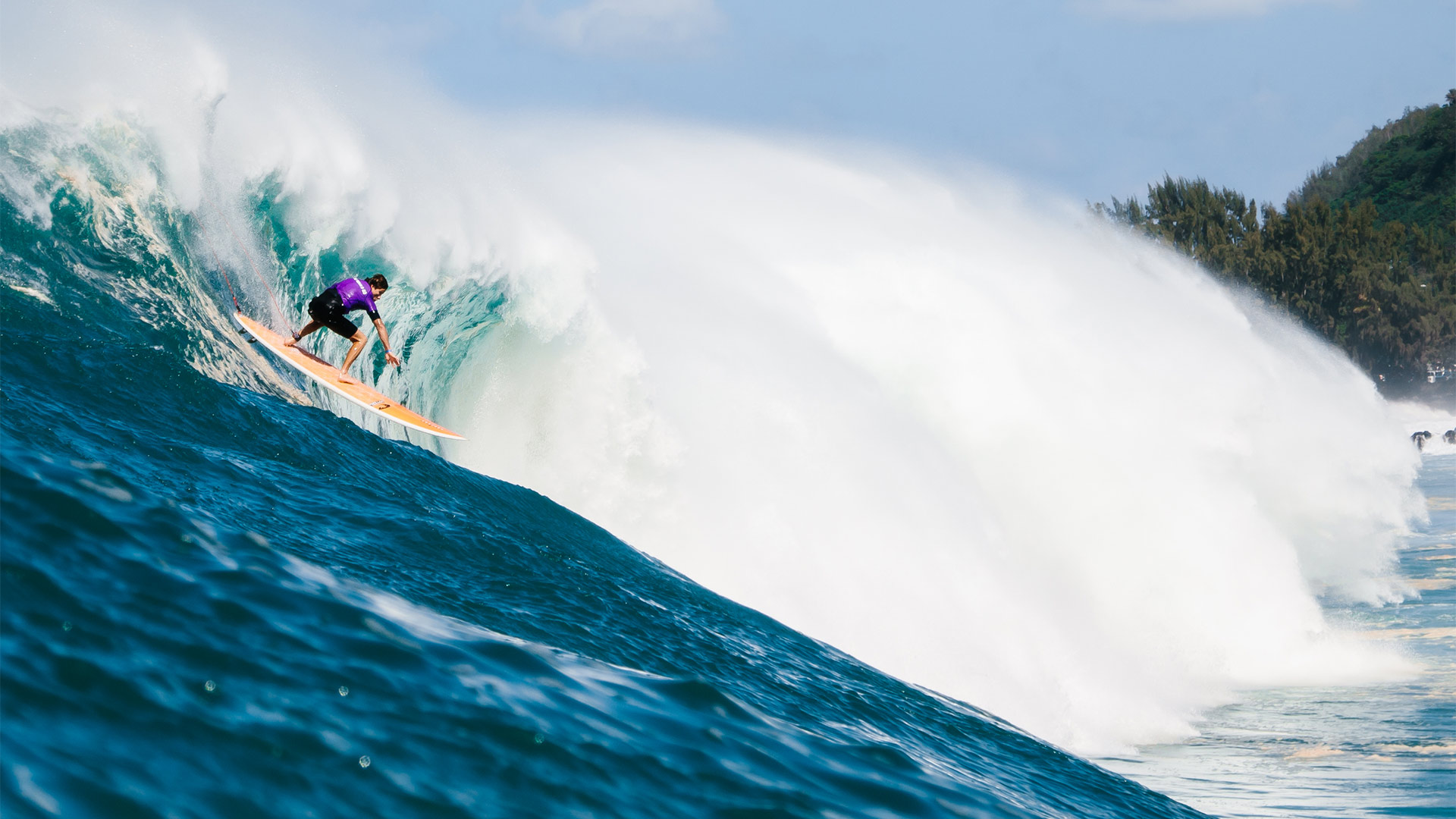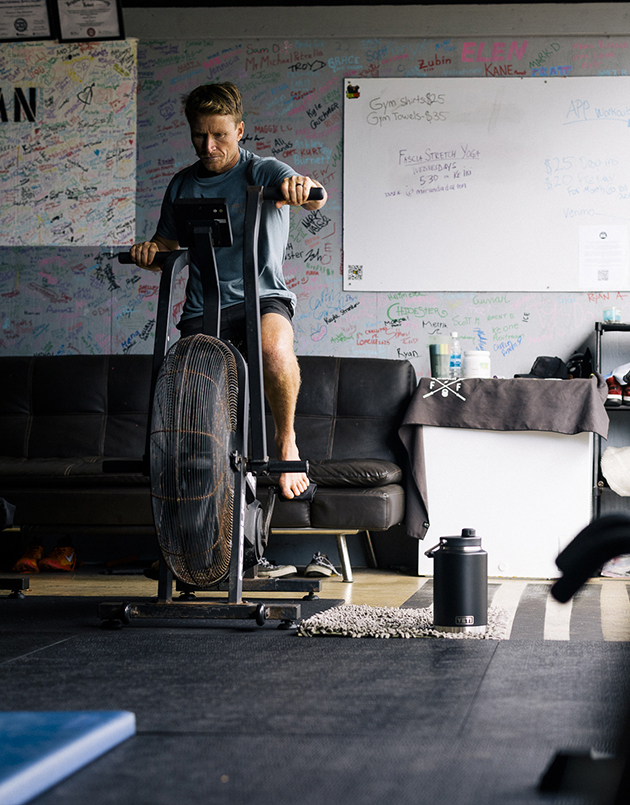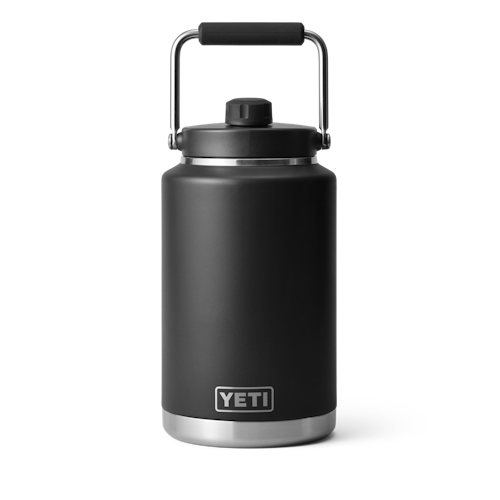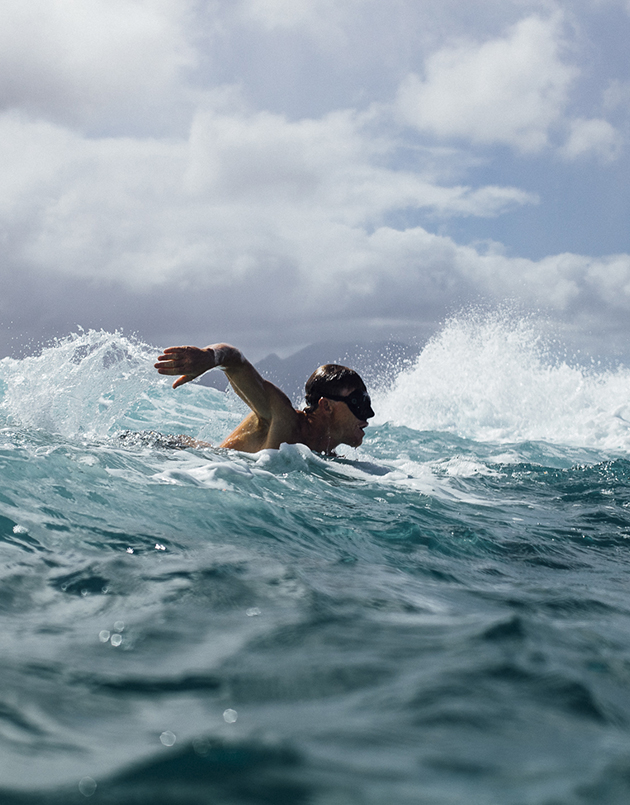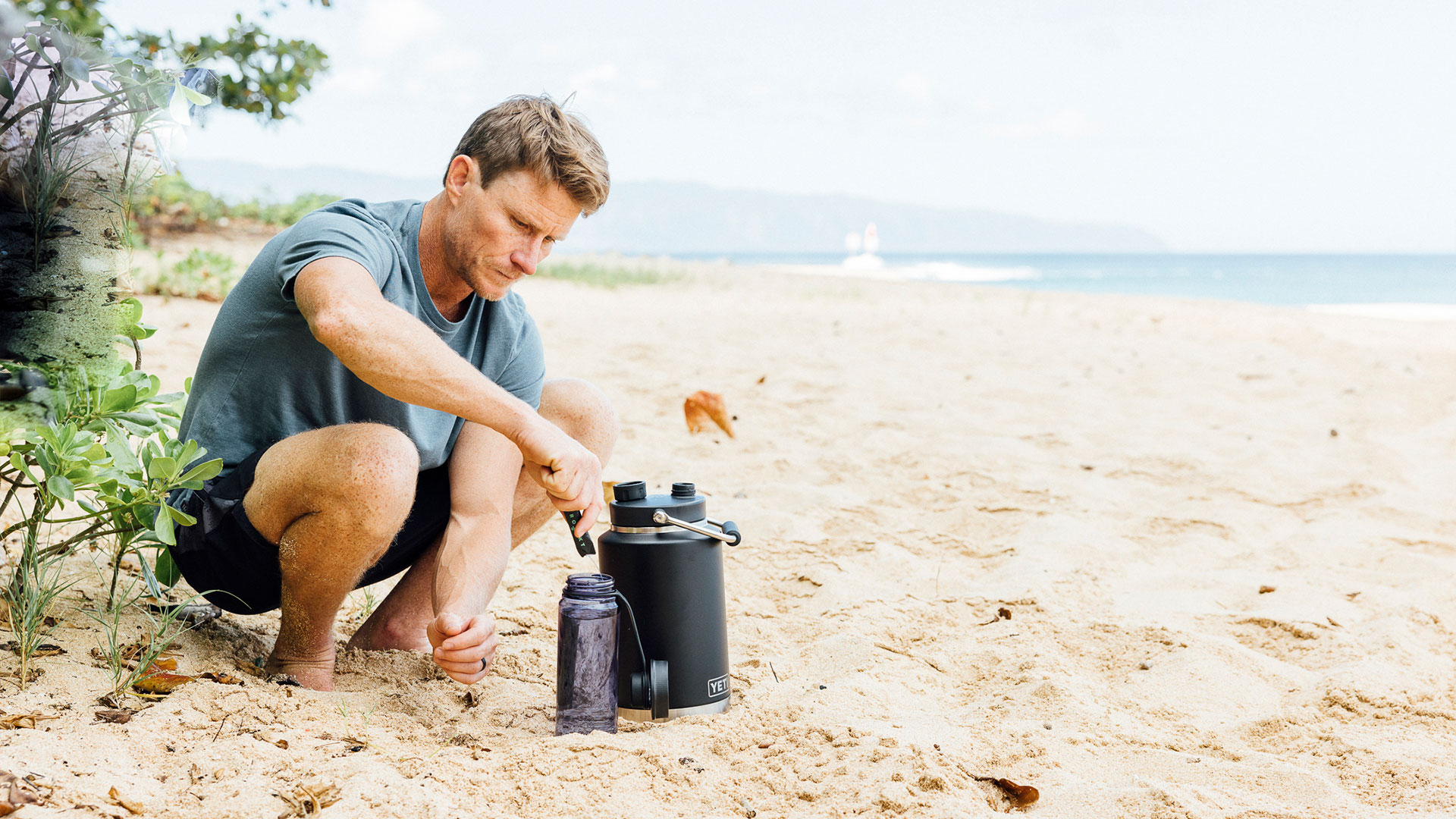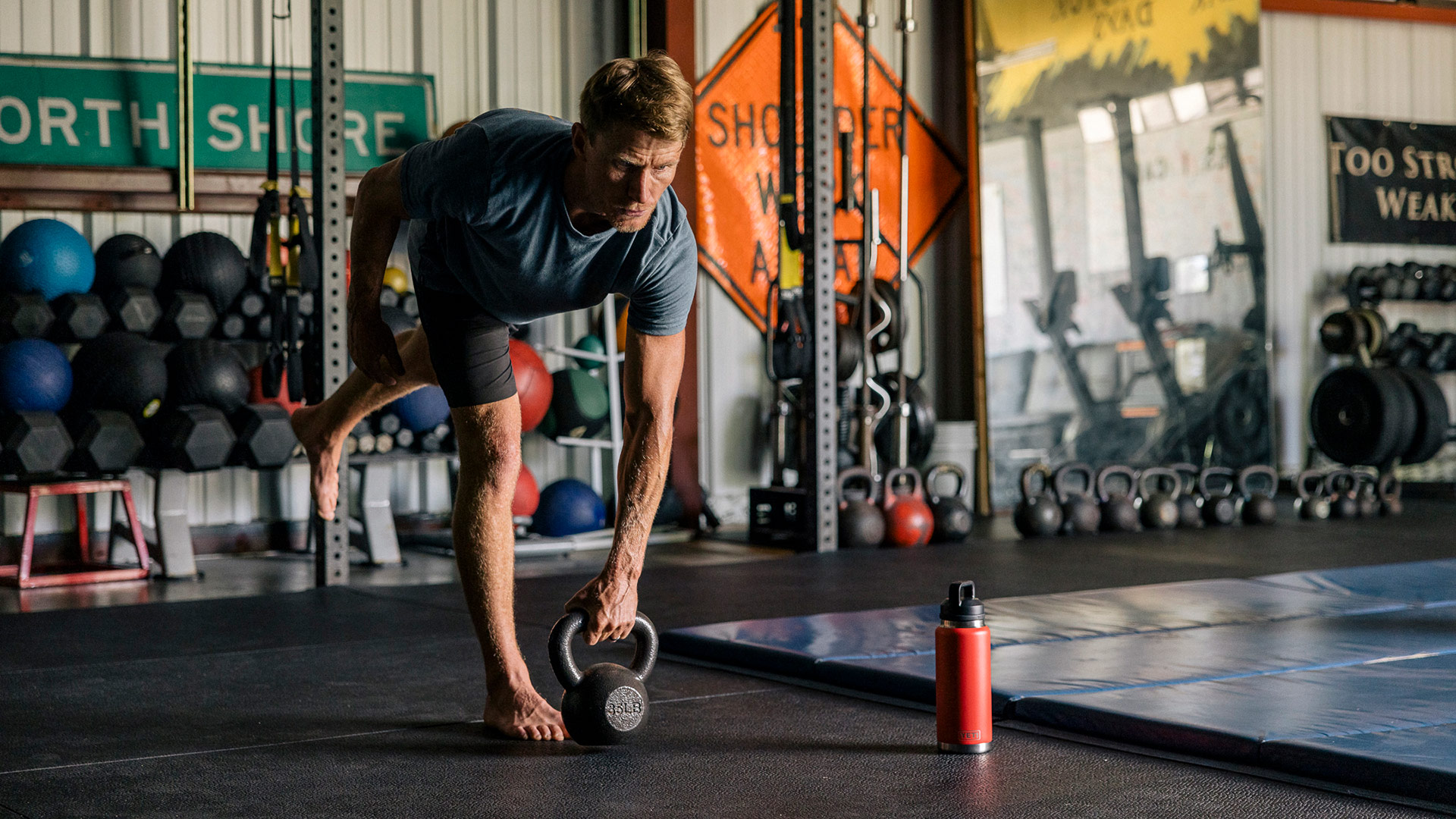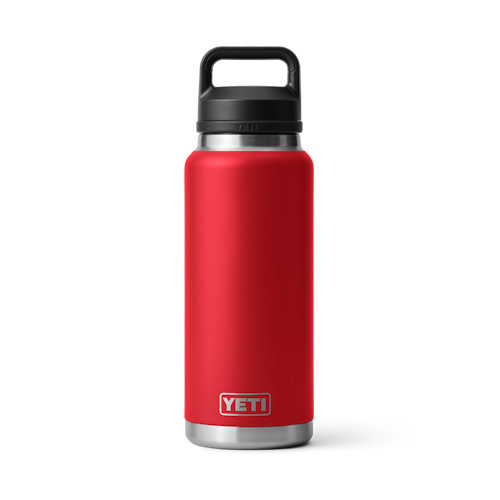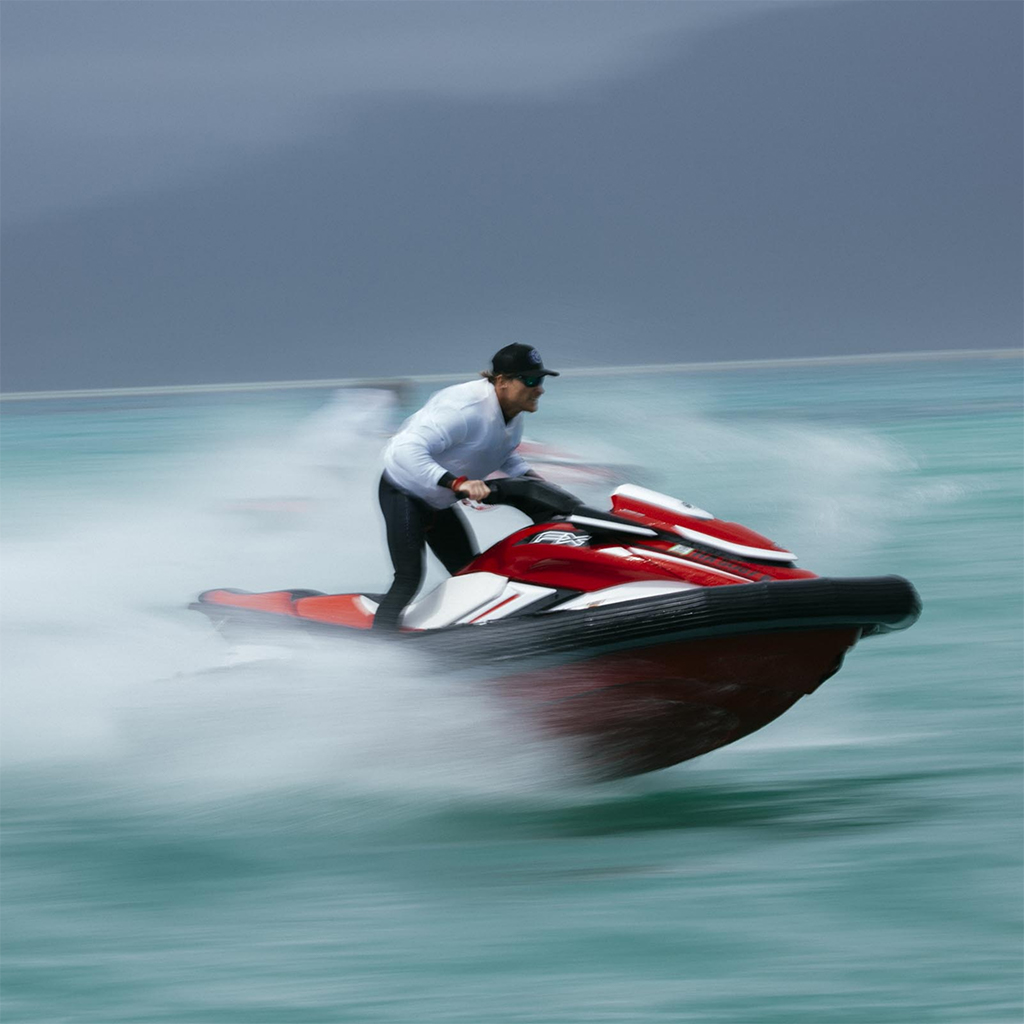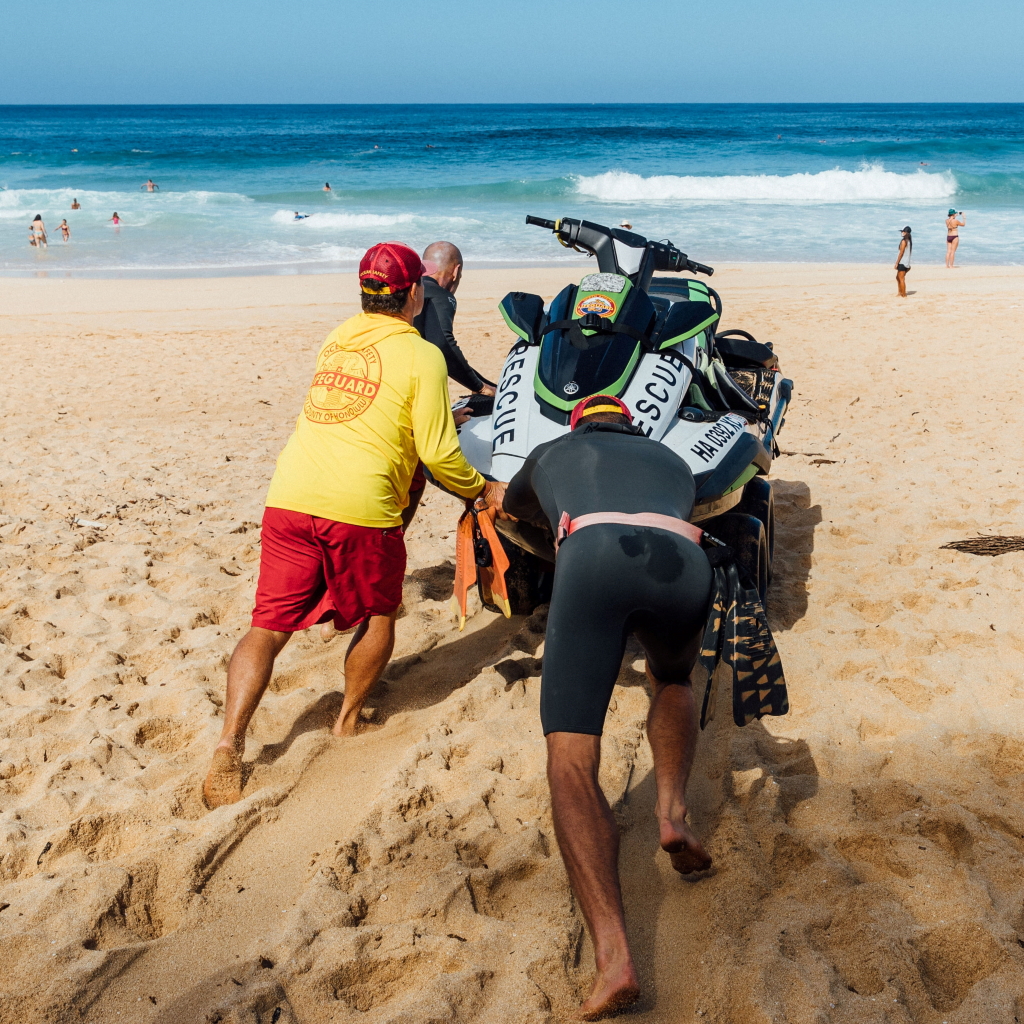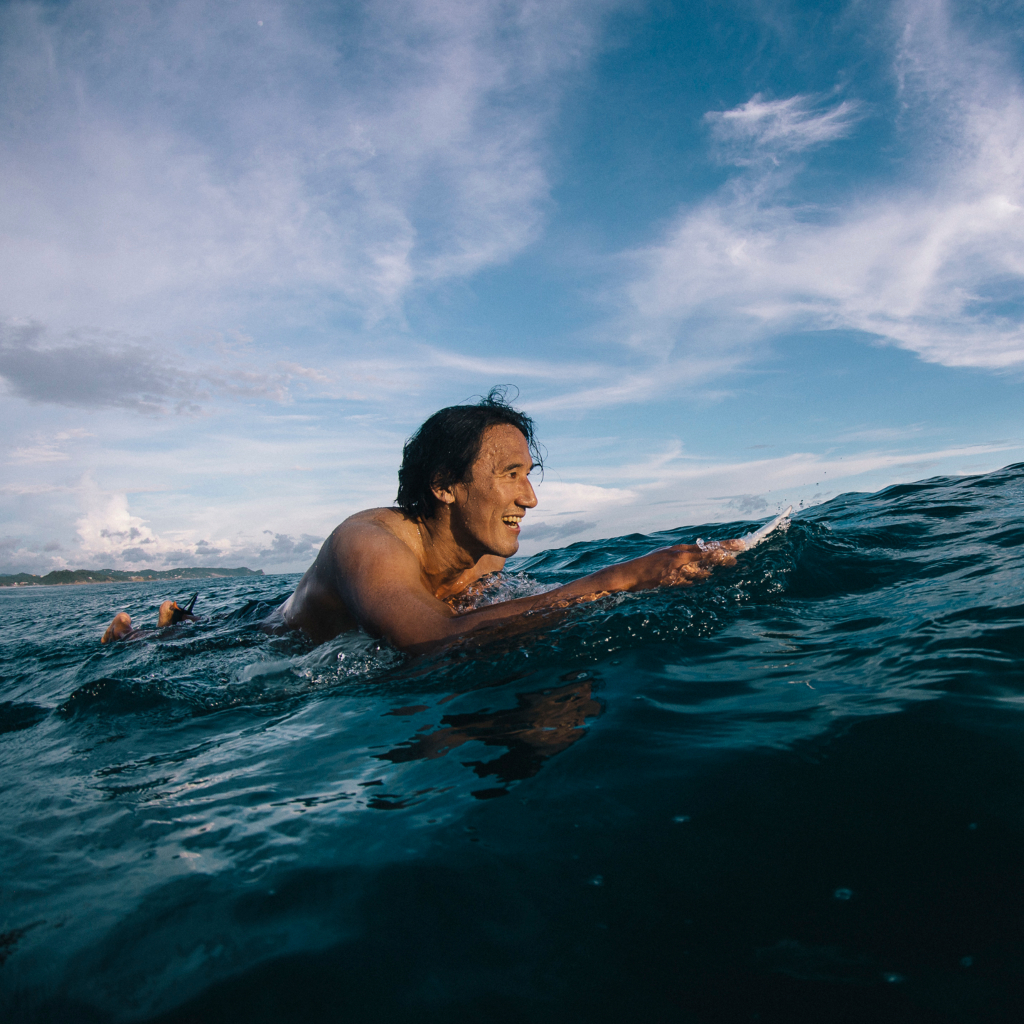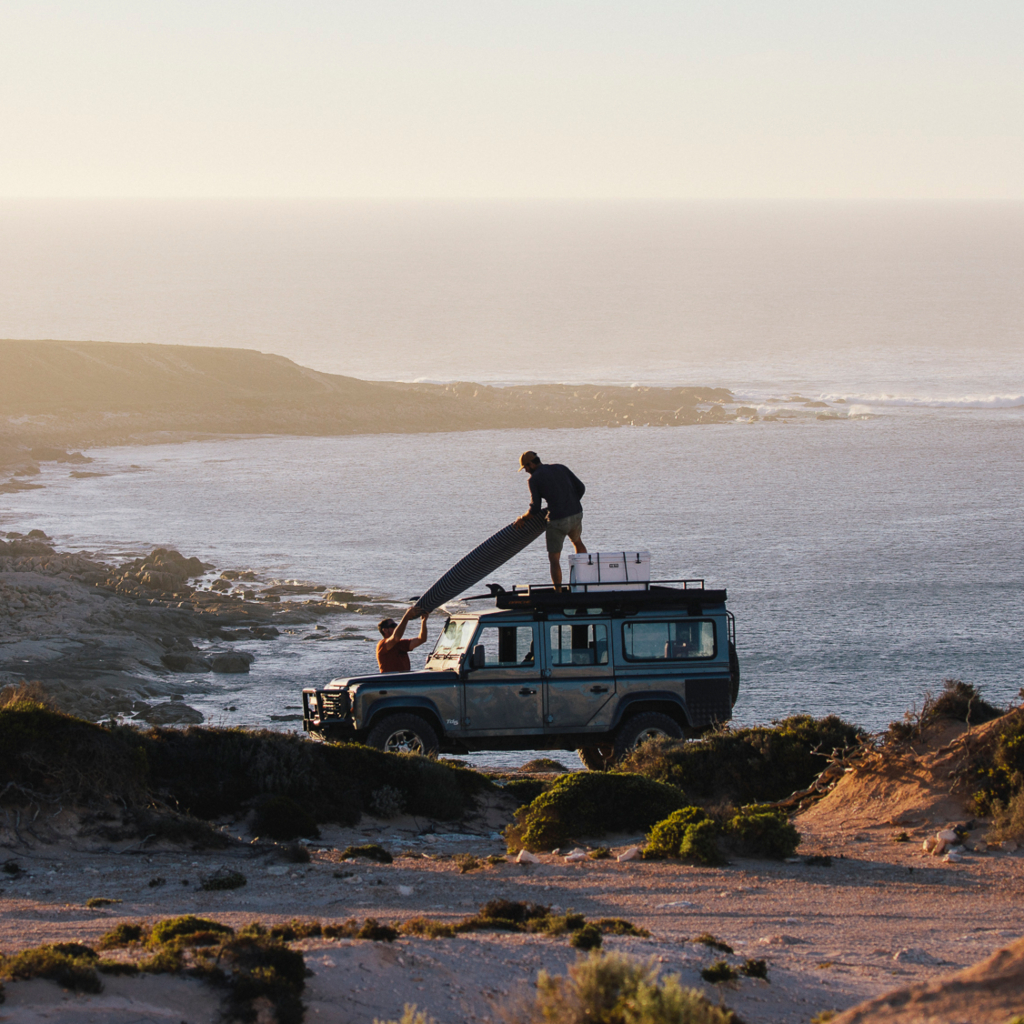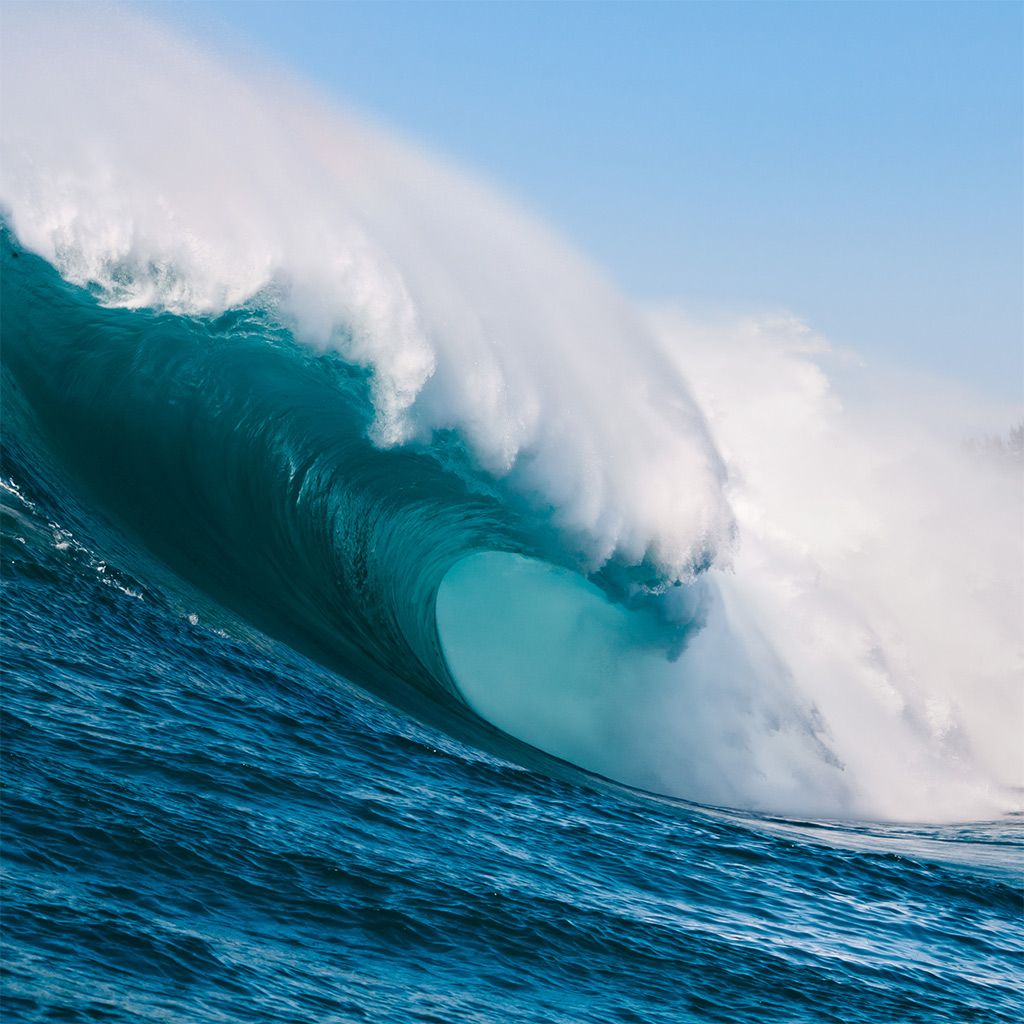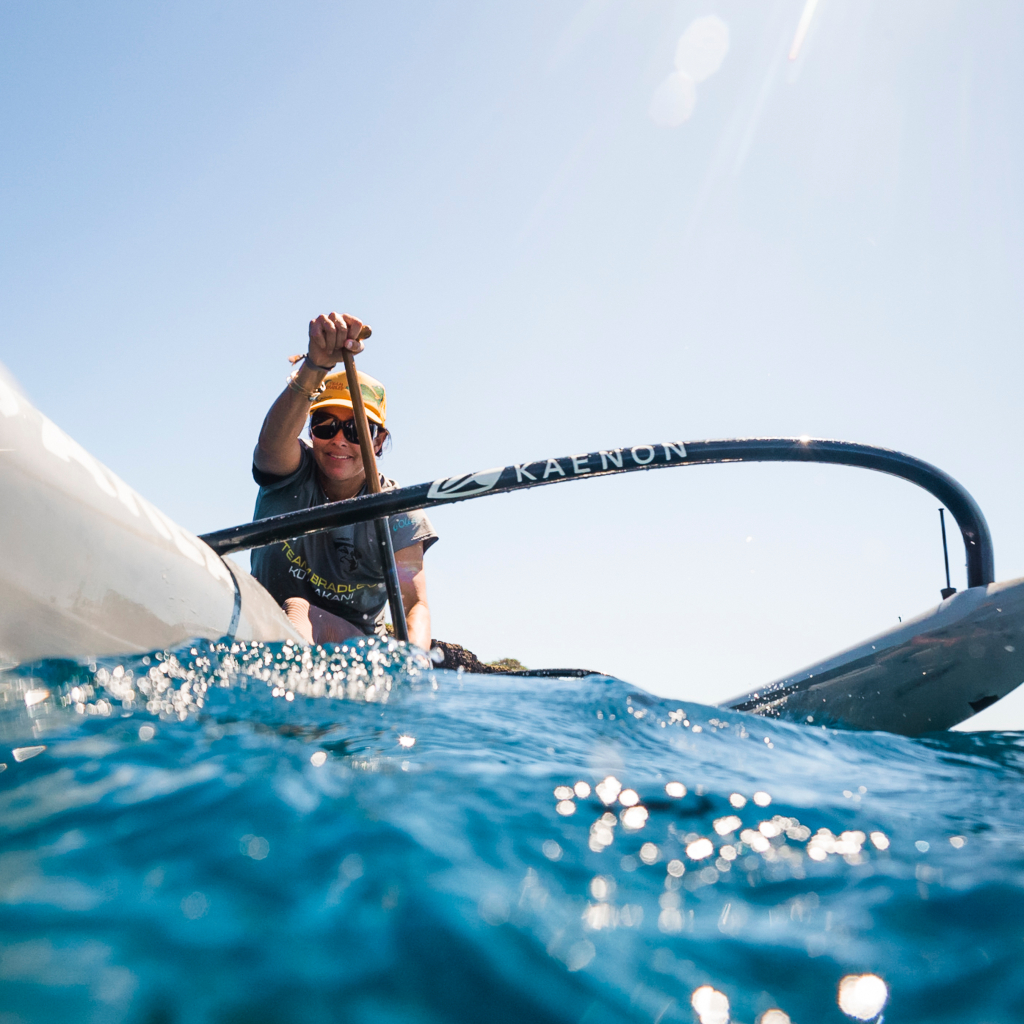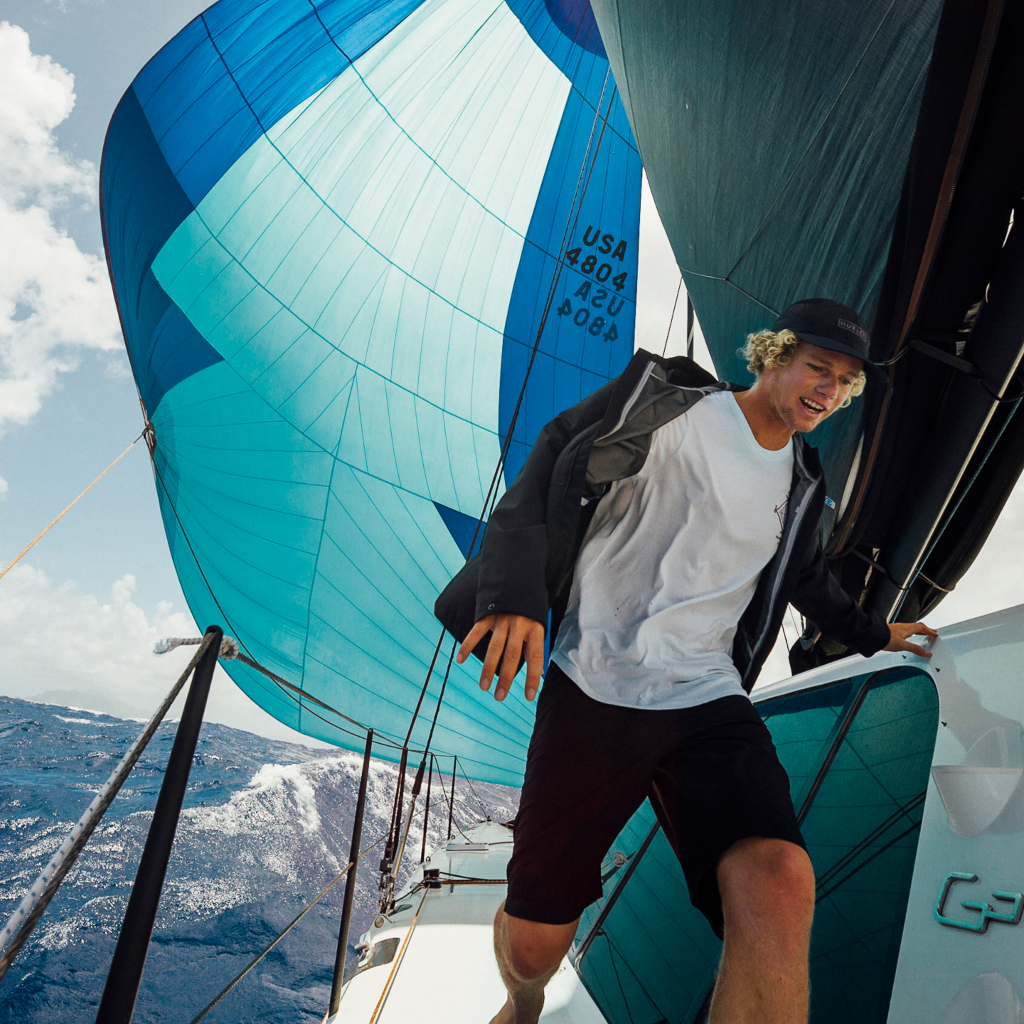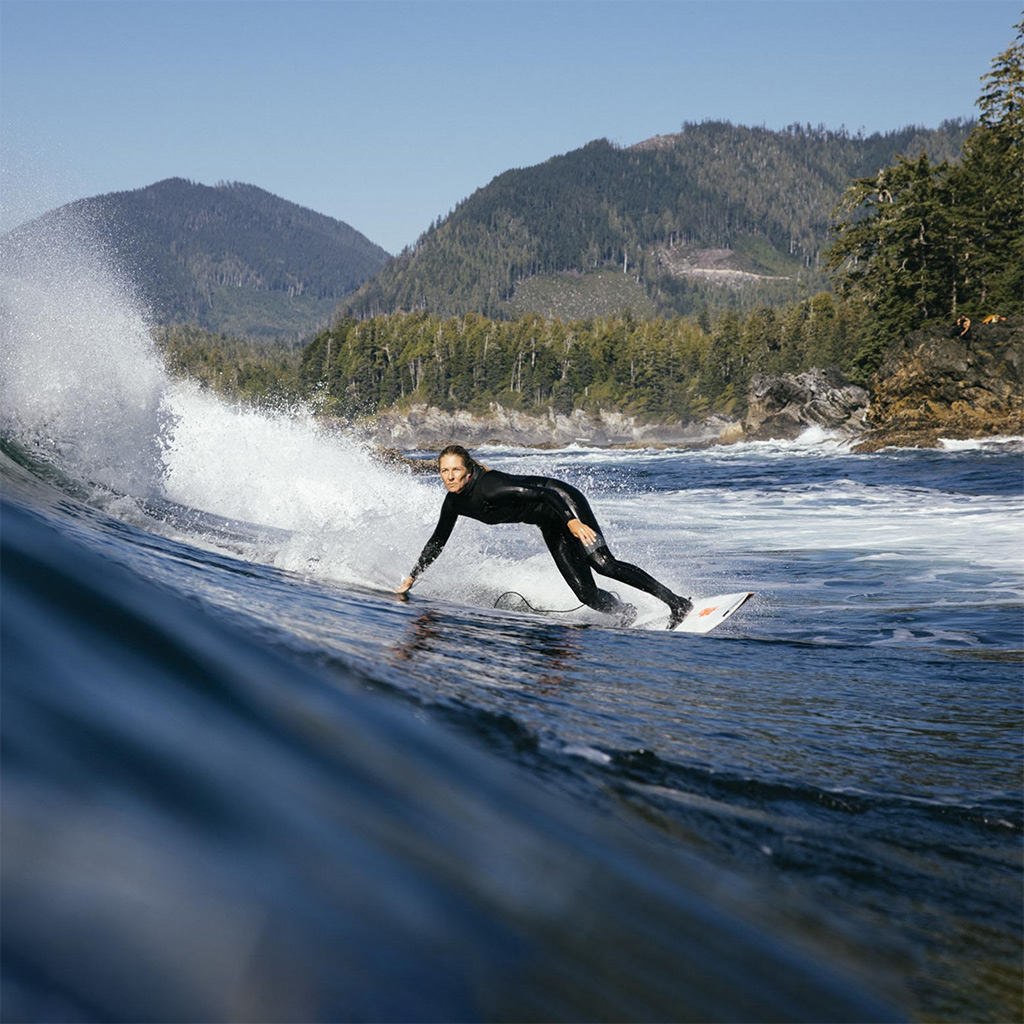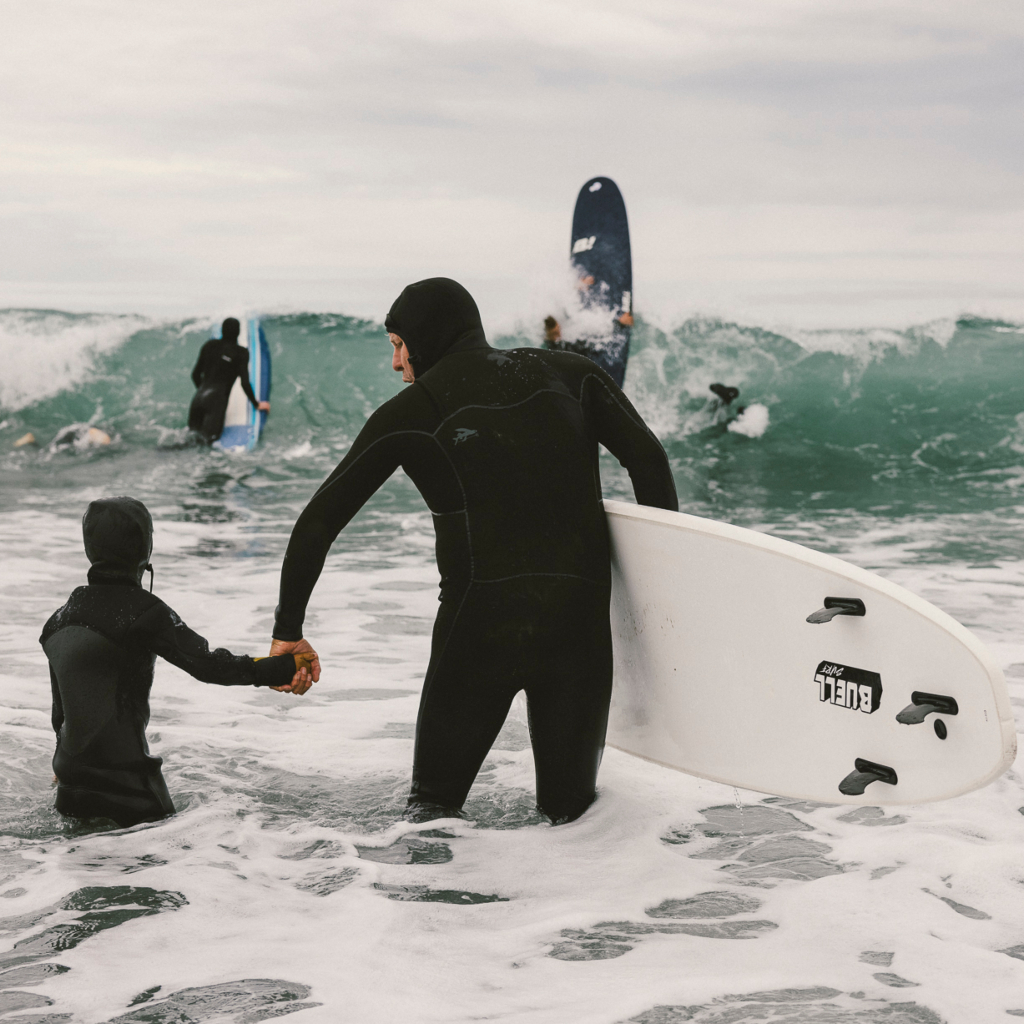To me, big wave surfing at its core has always been about the challenge. The swells, the risks, the physical and mental demands — they’re all, well, big. Especially the wipeouts. When up to fifty feet of water is coming down on you, it’s a moment of sensory overload and how you train for it can be the difference between life and death. Even having a 1% bigger “gas tank” – whether that’s cardio bandwidth, decision making through fatigue, or improved reaction time, my ability to get out of a bad situation can come from the training I’ve put in.
I spend a lot of time in the ocean, but varying my workouts with weight training in the gym helps me stay agile and strong. Plus, since surfing can be a very individual sport, getting into the gym with other people to enjoy some shared suffering also helps me push myself. Ultimately the work and training I do is in service of achieving incremental gains.
When a surfer is charging on a perfect wave, you’re only seeing 10% — the guts and the glory of it. Here’s a quick look at the remaining 90% of the sport: the daily physical fitness.
Much of my training is preparing for the inevitable: getting hit by a big wave. So I do my best to simulate these moments of great physical duress by pushing my CO2 tolerance. My on-land method is a combination of a stationary bike workout and breath holding: I bike for forty minutes, holding my breath for 30 seconds every other minute, pumping up the resistance every 5 minutes while maintaining the same output. It’s absolute misery. But it works.
You can’t physically impose your will on a force like the ocean, you can only respond. And when every second counts, the way you operate in extreme ocean conditions needs to be second nature. In addition to surfing, I spend as much time in and around the ocean as possible, whether that’s in training with open-water swimming, underwater breath-holding drills, or recreationally with spearfishing and diving.
It takes only 24 hours of poor-quality sleep to get to about 0.08 BAC, leaving a person legally intoxicated and impairing judgment, equilibrium, and cognitive abilities. So when I travel 18+ hours to remote big wave destinations, I try to have extra time to catch up on any lost sleep before I hit the water.
If I’m not properly hydrated, my muscles will tense up and waste precious energy. Limiting my caffeine intake helps with this as well as with any digestion issues. I add Protekt Liquid Supplements to my water because they help hydrate on the cellular level, they’re easy on my gut when I get tossed around in the water, and allow me to last a lot longer in the waves.
For big waves, you need weight to apply pressure to the board to put it on a rail. And for me, lifting weights is the best way for me to gain weight. The benefits to being physically bigger and stronger show when maneuvering a big, buoyant board on fast moving waves.
